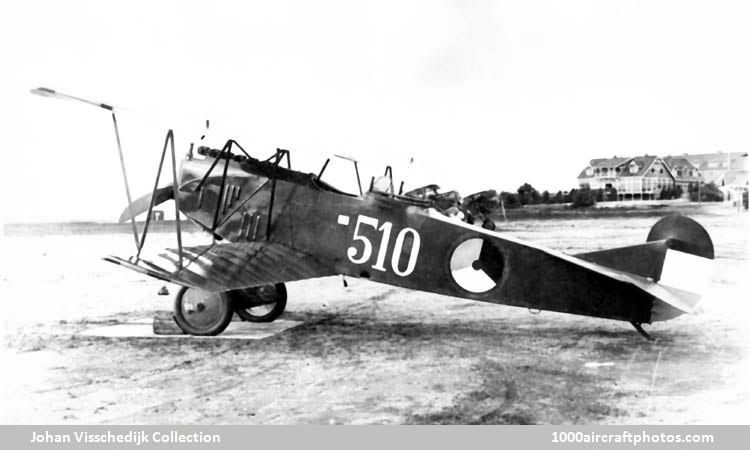06/30/2009. Remarks by Johan Visschedijk: "In September 1918 the Fokker V.38 (V = Versuchsflugzeug, test aircraft), virtually an enlarged D.VII, was flown at Schwerin, Germany, that became the prototype of the two-seat armed general purpose aircraft C.I. None had been delivered at the time of the Armistice on November 11, 1918, however Fokker had produce a considerable number that were smuggled by train to the Netherlands in May-June 1919.
Powered by an 185 hp BMW-III-a engine six-cylinder liquid-cooled in-line engine, sixty were delivered to the Netherlands AAS (NethAAS) between May 11 and July 29, 1920, these were allotted the serial numbers 485 to 544. The pictured aircraft served from June 11, 1920 till March 8, 1926. In 1922, an additional five (s/n 545 to 549) were assembled by the NethAAS from parts bought from Fokker.
The Netherlands Naval Air Service received the first of a total of sixteen C.Is (s/n F-1 to F-16) in 1920, the type was withdrawn from use in 1936.
Ca. 1930, the NethAAS rebuild 21 aircraft, that included the adoption of a 218 hp Armstrong Siddeley Lynx IVC seven-cylinder air-cooled radial engine, and new landing gear. These aircraft were designated C.1A, but commonly known as the C.I Lynx. One of these rebuilds, s/n 529, was temporarily fitted with an 140 hp Armstrong Siddeley Mongoose five-cylinder air-cooled radial engine. The last fourteen C.I/C.IAs were withdrawn from NethAAS service on March 29, 1938.
About 250 to 300 C.Is were produced, export customers included Columbia, the USA and the USSR."
